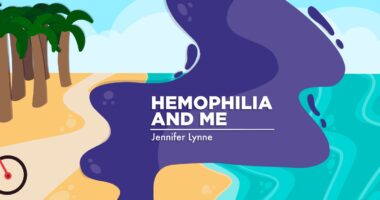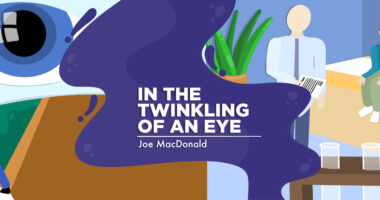A new initiative seeks to preserve the painful history of hemophilia
We mustn't forget a pivotal chapter of our community's past

On a recent call with others in the bleeding disorders community, a poignant concern emerged: the fear that the harrowing history of hemophilia‘s dark days may be slipping from our collective memory. The “hemophilia holocaust” remains a haunting chapter in medical history, etching an indelible mark on the lives of those grappling with the condition. As time inexorably advances, there is a growing apprehension that the gravity of this period is fading into obscurity.
Spanning from the late 1970s to the mid-1980s, the hemophilia holocaust was defined by the widespread contamination of blood products crucial for treating hemophilia. Those with hemophilia relied on blood products to manage their condition and pursue a semblance of normalcy. Tragically, a critical oversight in blood screening protocols permitted the infiltration of HIV and hepatitis C into the very lifelines meant to sustain them.
The consequences were catastrophic. Thousands of hemophiliacs in the United States found themselves battling life-threatening diseases, leading to widespread illness, loss of life, and immeasurable human suffering. Families were shattered, communities devastated, and the medical community faced unprecedented scrutiny for its role in the unfolding tragedy.
Thanks to the tireless efforts of many hemophiliacs who fought for a safer future, significant strides have been made in securing a more reliable blood supply for everyone. Treatment has improved to the point that some youngsters seldom need blood products.
Many young families new to hemophilia are not aware of our painful past. However, the echoes of the hemophilia holocaust still reverberate among those of us who lived through it.
Personal struggles and anxiety
I was diagnosed with hemophilia B and von Willebrand disease in the mid-’70s, so the trauma of the hemophilia holocaust lingers for me. My reluctance to infuse medication without first exhausting every alternative underscores my enduring anxiety. Personal experiences of nausea and profuse sweating during medication injections serve as stark reminders of the psychological scars left on me by this dark chapter in medical history.
Medical post-traumatic stress disorder is not an abstract concept but a lived reality for those who, like me, harbor an inane mistrust borne from the shadows of a traumatic past.
Participating in one-on-one conversations at the Hemophilia Federation of America‘s Mild Matters Summit last November offered a poignant revelation, a shared experience transcending age and gender. As hemophilia is mainly a genetic condition, many participants, particularly those of my generation, carried untold stories of loved ones lost to the scourge of HIV/AIDS. Brothers, fathers, uncles, and friends — each a painful chapter etched in our community’s collective memory.
Despite the prevalence of these heart-wrenching narratives, a collective silence exists, an unspoken pact to avoid delving into the raw pain of our shared past. It’s as if the wounds are still too deep, the grief too heavy to bear openly. Our community is hurting, and the weight of the trauma is palpable.
The Committee of Ten Thousand
The Committee of Ten Thousand (COTT) is a grassroots, peer-led organization that was initially formed for the estimated 10,000 hemophiliacs in the U.S. who contracted HIV from contaminated blood products. The University of California, San Francisco (UCSF) Archives and Special Collections recently received a valuable collection of materials from COTT. An effort is underway to digitize the collection so our shared history won’t be lost.
COTT’s president, Michael Allen, is quoted on the UCSF Library’s website:
“This collection represents decades of work to fight for patient rights after this tragedy. It represents the voices of the thousands of people who were infected and died of HIV/AIDS, the work by advocates who fought tirelessly, and the lives of the loved ones we lost while fighting to shed light and bring justice to those affected by this contamination pandemic. It represents an undying fire that will always burn for blood safety.”
Once the COTT collection is digitized, it will become accessible to the public. Community members are encouraged to contribute materials, ensuring a comprehensive and enduring record of this pivotal chapter in medical history. By collectively safeguarding these narratives, we honor the resilience of those who fought for justice and created hope for the bleeding disorders community.
Let us never forget.
Note: Hemophilia News Today is strictly a news and information website about the disease. It does not provide medical advice, diagnosis, or treatment. This content is not intended to be a substitute for professional medical advice, diagnosis, or treatment. Always seek the advice of your physician or another qualified health provider with any questions you may have regarding a medical condition. Never disregard professional medical advice or delay in seeking it because of something you have read on this website. The opinions expressed in this column are not those of Hemophilia News Today or its parent company, Bionews, and are intended to spark discussion about issues pertaining to hemophilia.







Kathy MacKay
Thank you for writing about this important topic and our quest to preserve history before it is forgotten. We sure need community support to make this happen. USCS has begin a fundraising campaign to raise the money need for the indexing and archiving of the documents. Here is the link to for a tax-deductible donation: https://givingtogether.ucsf.edu/fundraiser/4803121
Jennifer Lynne
Thank you, Kathy! I appreciate you sharing the link to donate and your efforts to preserve this vital part of history. ❤️
George Coakley
My name is George Coakley the 3rd. I was born may of 1988. My father was born a hemophiliac as was my uncle. He contacted HIV well allegedly.. I watched him die on my 13th birthday. The meds they gave him to stop the Aids development killed him. He threw up blood like the exorcist all over the living room on my birthday infront or several people.. I got to tear out the carpet and bleach the floor after the fact! The carpet that was paid for with the very little money he was given for his life. Im sick of being quite. Im sick of the censorship. I have been fighting my entire life chasing a dream thats out of reach for a country that I watched kill my bloodline. My dad died at 39 years old. Here I am 37 feeling so young. Wondering what it was like for him having a family dealing with all that!!!
Jennifer Lynne
George - thank you for sharing this. I’m so sorry you had to live through that. Watching your dad suffer on your 13th birthday, losing him at 39, and carrying that pain and anger for years is unimaginably hard. What you describe, the trauma, the grief, the feeling of being silenced, matters, and it matters that you said it out loud here.
You have every right to be furious. Your voice is important to the record of what families went through during the tainted-blood era, and your memories deserve to be honored, not hidden.
If you want any of the following, I’d be honored to help:
Share more of your story here or in a future column (with your permission).
Help connect you with groups that support people affected by hemophilia/HIV and the tainted-blood crisis.
You don’t have to be quiet. If you want to talk further or want me to help amplify your story, say the word. I’m listening and I care. With gratitude for your courage in sharing,
Jennifer